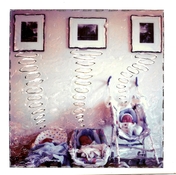Alan, it's all in the final visual effect. 8x10 photography depends on juggling several things : attaining sufficient depth of field (which is half of that of a comparable 4X5 perspective - in other words, if you get you're desired depth of field at f/22 in 4x5, you'd need twice that, f/45, to get the same depth on 8x10, because you'd need twice as long a focal length lens.
You also have to factor film flatness. For critical work, I use adhesive or vacuum holders for 8x10. With 4x5, standardizing on f/32 instead of f/22 has the benefit of better handling film flatness issues.
I don't like to tempt diffraction; but for my levels of enlargement, that limits me to f/64 or preferably f/45 with 8x10, or f/32 in 4x5 work. But a contact printer can get away with much smaller stops because he's after only a 1X scale of reproduction.
But yeah, vignetting is a factor too. For instance, I have certain 240 and 250 lenses which easily cover 4x5 format at wide f/stops, but might need to be stopped down to f/45 or f/64 just to competently cover 8x10 with significant movements involved, like front tilt or rise.






